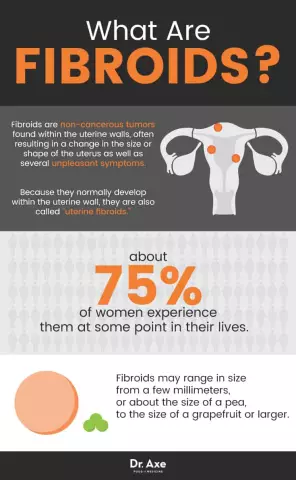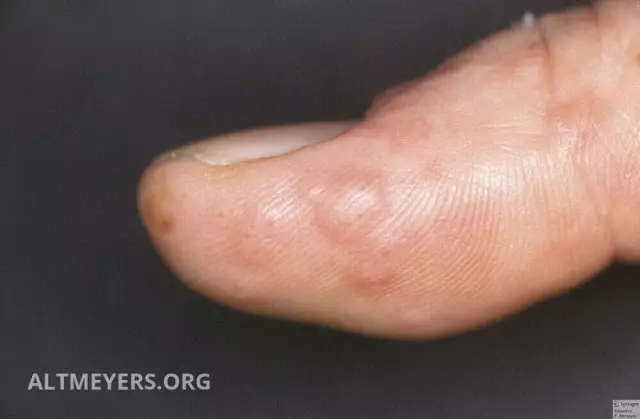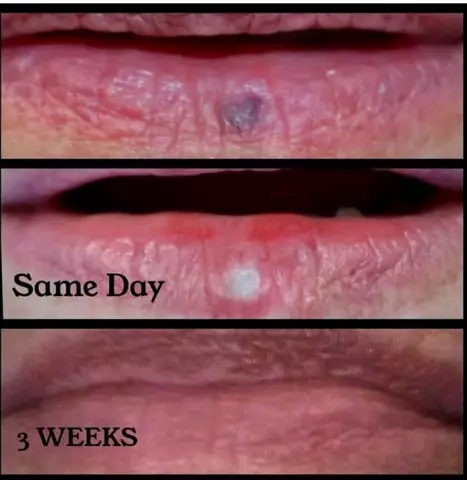- Author Rachel Wainwright [email protected].
- Public 2023-12-15 07:39.
- Last modified 2025-11-02 20:14.
Proctitis

Proctitis is an inflammatory disease in which the rectal mucosa is affected. Proctitis may be accompanied by inflammation of the intestinal area above the rectum. Proctitis is often confused with paraproctitis. With paraproctitis, the tissues surrounding the rectum become inflamed.
Causes, forms and symptoms of proctitis
Proctitis can develop with improper diet, excessive alcohol consumption, and spicy foods. Often, rectal proctitis develops against the background of constant constipation. Regular constipation contributes to venous stasis in the rectum. Stagnation of blood in the walls of the rectum injures the intestinal mucosa. All these factors lead to the development of congestive proctitis.
When infested with parasites (balantidia, Trichomonas, dysentery amoebae), the risk of developing parasitic proctitis increases. A gonococcal infection can lead to gonorrheal proctitis.
Rectal proctitis can develop with hypothermia, diseases of the pelvic organs (cystitis, prostatitis). The development of this disease can provoke diseases of the rectum, proceeding without an inflammatory process (for example, hemorrhoids). There are acute and chronic forms of proctitis. Acute proctitis is divided into catarrhal-hemorrhagic, catarrhal-purulent and polypous proctitis. Acute proctitis is characterized by a superficial lesion of the intestinal mucosa. With the catarrhal-hemorrhagic form of proctitis, point scattered hemorrhages are formed in the rectal mucosa. With a catarrhal-purulent form of the disease, the mucous membrane of the rectum is evenly covered with a purulent bloom. With the polypoid form of proctitis, polypoid formations (outgrowths) are formed on the rectal mucosa.
Ulcerative (erosive) proctitis is accompanied by the development of ulceration or erosion of the rectal mucosa. Acute proctitis most often develops within a few days. Chronic proctitis usually develops over several months or even years. With this form of the disease, the deep layers of the intestinal mucosa are affected. Chronic proctitis can be atrophic or hypertrophic. With atrophic proctitis, the mucous membrane is thinned, and its folds are smoothed. In hypertrophic rectal proctitis, the folds of the mucosa become loose due to thickening.
The main symptom of acute rectal proctitis is pain in the rectal area. The pain is usually accompanied by purulent and bloody discharge from the anus. Pain in acute proctitis usually increases during bowel movements. Other symptoms of acute proctitis are diarrhea, constipation, pain in the perineal region, radiating to the lower back and genitals.
In the chronic form of the disease, phases of exacerbation and decay alternate. With an exacerbation of the disease, painful sensations periodically appear in the rectum, hind intestine, or in the ileal region on the left. In the stage of remission (remission), the only manifestation of the disease is the presence of mucus in the stool. Gonorrheal proctitis can be accompanied by narrowing of the rectum and the development of chronic constipation.
Diagnostics and treatment of proctitis
When symptoms of proctitis appear, special studies are carried out to clarify the diagnosis. With a digital rectal examination, the doctor probes the inflamed intestinal walls with his finger. With rectoscopy, examination of the intestinal walls is carried out using a rectoscope. This research method allows you to accurately distinguish proctitis from other diseases with similar symptoms.
Intestinal cytology and intestinal wall biopsy are prescribed to determine the extent and nature of inflammatory changes. These methods can also distinguish proctitis from a bowel tumor.
Treatment of proctitis largely depends on the form and cause of the disease. The treatment regimen for proctitis includes a therapeutic regimen, hygienic measures, and adherence to a diet. In severe forms of acute proctitis (catarrhal-purulent, erosive, ulcerative, polyposis), hospitalization is indicated. A patient with acute proctitis is prescribed bed rest.
With proctitis, the amount of fiber consumed is limited, and spices and any spicy foods, alcohol, fried foods are completely excluded. The basis of the diet for this disease should be soups based on lean meats, fermented milk products, lean meat in a grated form.
For the treatment of acute proctitis, antibiotics are prescribed to suppress the development of the infection. The dosage of the antibiotic and the duration of treatment should be determined by the attending physician.
For topical application for this disease, oil microclysters, microclysters with collargol solution, chamomile decoction, sitz baths with potassium permanganate are used.
In chronic proctitis in remission, baths and mud therapy are indicated. A good effect is obtained by washing the intestines with warm mineral water (Borjomi, Essentuki). Washing activates the motor function of the digestive tract and helps to remove mucus.
Surgical treatment of proctitis is rarely prescribed. With timely treatment, the disease ends in full recovery. Compliance with hygiene recommendations and diet significantly reduces the risk of exacerbations of the disease.
Proctitis - treatment with folk remedies

Some methods of treating proctitis with folk remedies help relieve the inflammatory process that occurs in the rectal area. When treating proctitis with folk remedies, you need to take two tablespoons of calendula flowers and pour them with a glass of boiling water. All this must be heated in a water bath for 15-20 minutes (stir constantly). The resulting infusion should be cooled and filtered. The infusion should be consumed daily three to four times a day, after diluting it with water.
This infusion can be used for bowel lavage. To do this, add one tablespoon of boric acid (3%) to one tablespoon of the infusion. The resulting medication is administered with an enema every day before bedtime.
With proctitis, you can take half a tablespoon of lemon balm and oregano, mix and pour a glass of boiling water. Then put it in a water bath for 25 minutes, then let the broth brew for an hour and a half. The resulting broth can be used to produce retained enemas.
For a sitz bath, you can use a horsetail infusion. To prepare the infusion, you need to take half a glass of field horsetail and pour it with one liter of boiling water. Let the broth infuse for about ten minutes and strain. The resulting broth can be used for a sitz bath.
For inflammation of the rectal mucosa, a mixture of oak bark, toadflax flowers and water pepper herb will help. All components must be taken in equal amounts, grind to a gruel in a mortar and pour over with melted warm pork fat. After 12 hours, the resulting mixture should be slightly warmed up and filtered. Then take a little of the prepared mixture on a gauze pad and insert it into the anus. Keep for at least five hours. The course of treatment should last approximately three weeks.
YouTube video related to the article:
The information is generalized and provided for informational purposes only. At the first sign of illness, see your doctor. Self-medication is hazardous to health!






